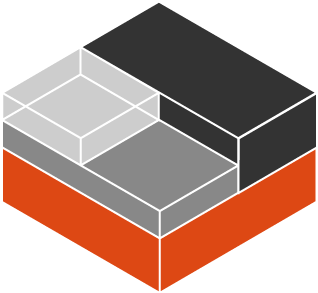===============================================================================================================================
This thread is about using INCUS on OMV. It's not a detailed [How-TO] but gives an overview.
1. Added 17/03/2025 - Using incus to manage containers & VMs, how OMV storage and "bridged" networks can be used & the lxconsole UI.
2. Added 18/03/2025 - Using a "macvlan" network in incus. An example of the official "Incus UI"
3. Added 18/03/2025 - Using the incus command line & managing incus from your Linux desktop.
4. Added 18/03/2025 - Using vlans in incus. A basic example.
5. Added 20/03/2025 - Using OMV "shared folders" on EXT4 and BRTFS filesystems for INCUS storage pools.
6. Added 20/03/2025 - Using LVM in OMV for an INCUS storage pool.
7. Added 21/03/2025 - Using additional storage for VMs and giving containers access to OMV files.
8. Added 22/03/2025 - Using ISOs to create VMs in incus.
9. Added 22/03/2025 - Using incus to creating instance snapshots, duplicates and images from instances.
10. Added 26/03/2025 - Using incus profile to configure instances.
11. Added 31/03/2025 - Using incus exec, etc. in first steps to automation.
12 Added 01/04/2025 - Using incus with cloud-init for automated configuration with examples.
13. Added 03/04/2025 - Using incus with cloud-init: a last example and summary.
14. Added 07/04/2025 - Using an incus container as a "docker" host.
15. Added 09/04/2025 - Using docker images directly in incus - part 1.
16 Added 09/04/2025 - Using docker images directly in incus - part 2.
17. Added 09/04/2025 - Using docker images directly in incus - part 3.
18. Added 11/04/2025 - Using incus-compose: Installation.
19. Added 11/04/2025 - Using incus-compose: Managing OCI containers with examples.
20. Added 11/04/2025 - Using incus-compose: Managing OCI containers with further examples and incus-compose commands.
21. Added 16/04/2025 - Using incus to backup instance or volume, part 1 of 3 : taking snapshots.
22. Added 16/04/2025 - Using incus to backup instance or volume, part 2 of 3 : exports and imports.
23. Added 17/04/2025 - Using incus to backup instance or volume, part 3 of 3 : copy or migrate between servers.
24. Added 22/04/2025 - Using incus: A Summary
===============================================================================================================================
A few weeks ago trythat asked about using INCUS on OMV (Incus and LXConsole) . Apart from the fact that ryecoaaron has all the bases covered in their "KVM plugin", I was sceptical it could work on OMV at all. Well, I was wrong.
If you've never heard of incus, or are uncertain as to what the project is about it's described as: "A next-generation system container, application container, and virtual machine manager.", there's more here: https://linuxcontainers.org/incus/
If anyone wants to experiment there are guides on the net you can use/adapt to get started by installing both incus and the latest version of the lxconosle web UI (this is not the same as the incus-ui-canonical package) on OMV. I used the zabbly stable repo in my try out.
The first caveat is about how incus uses storage, to quote the docs: "The two best options for use with Incus are ZFS and Btrfs. They have similar functionalities, but ZFS is more reliable.", but you can read more here: https://linuxcontainers.org/incus/docs/main/storage/ . You can use other storage types like "dir" or "LVM", but these are less optimized for incus.
The second caveat is the use of networks. Similar to how libvirt/KVM/qemu works, incus creates a default NAT'ed bridge "incusbr0" by which both containers and VMs communicate with the outside world but not directly with the host. But just as you can with the KVM plugin, creating a bridge (or a macvlan) on a OMV nic is straightforward and this can be added to an incus profile.
Using the lxconosle WEB UI removes the chore from using the incus at the command line. For graphical VMs, the vga console makes use of spice.
I'm not suggesting this is a replacement for the well estbalished "KVM plugin" and the curious are probably best advised to set it up in a VM at first. But trying it out will give you an idea of the project's scope.
In case you're wondering, I've run this on my now ancient desktop with limited resources which is set up for nested virtualisation.
OMV screenshots:
Incus create both filesystems for containers and zvols for VMs on the pool ( Incus would create subvols on BTRFS for both)
lxconsole screenshots:
More below

